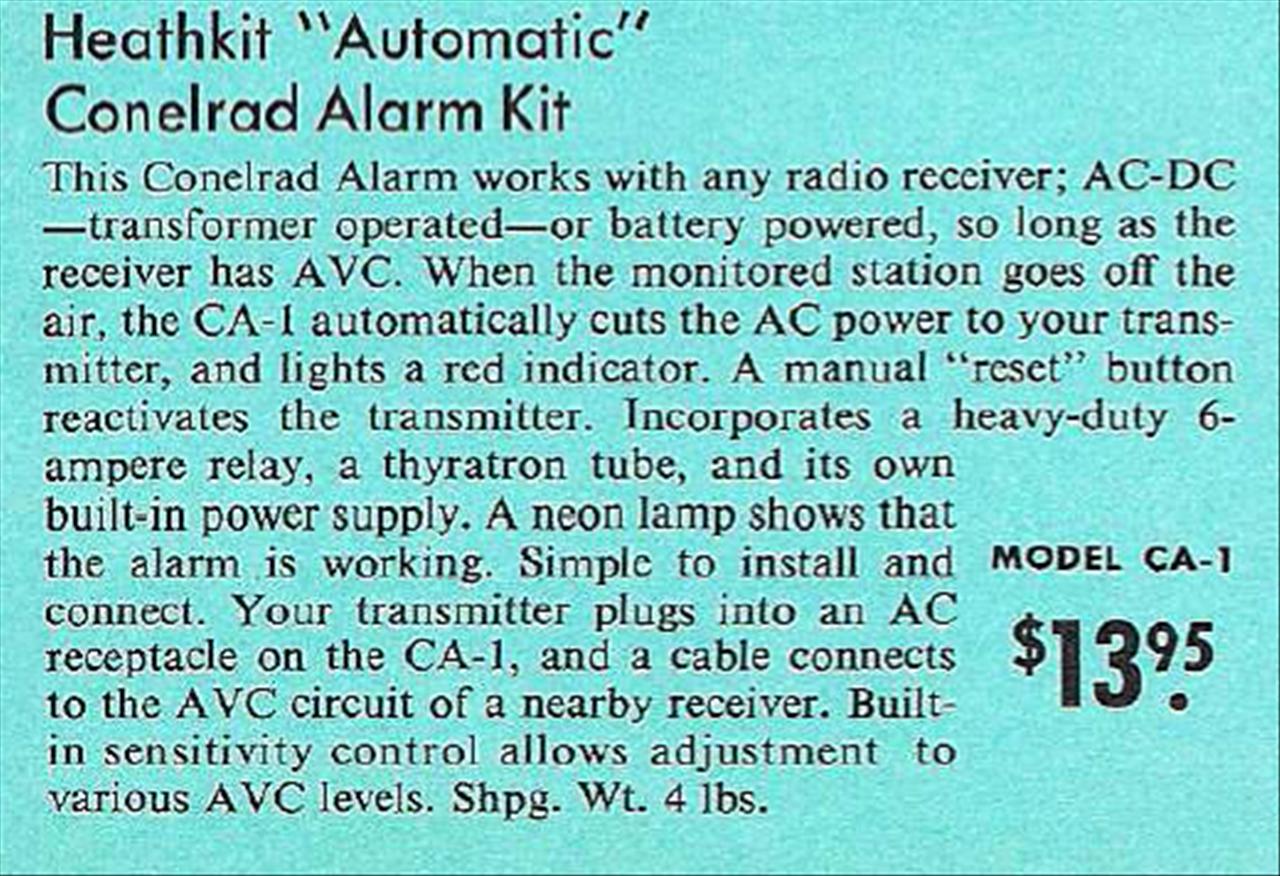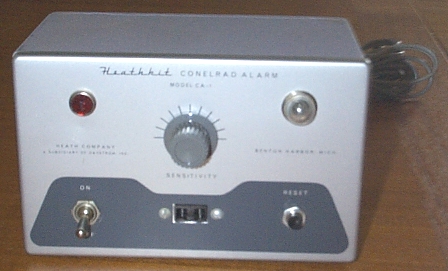K5LAD - 50 Years of Ham Radio Memories
Volume XXIV
Stop That
Transmitting --- IMMEDIATELY!!!
If I wrote the word "CONELRAD" on a pad and showed it to many current-day hams, they'd probably think I was talking about a high-ranking Army officer named Rad and I’d just made a mistake in spelling his rank. The truth is, back during the 50s and early 60s, all hams knew what was meant by Conelrad and they were very aware of their need to comply with government regulations concerning this word and the requirement it represented. If I spoke the word "Conelrad " to the present group of hams licensed in the last 25 or so years, even those old-timers might not have a clue as to what I was saying.
Then someone raised the fear that incoming missiles and bombers could "home in" on radio signals to lead them directly to their intended targets. This included both commercial broadcast radio and TV stations and ham radio stations. Should this dreaded attack be imminent, all broadcasting sources, both commercial and amateur, MUST immediately shut down and citizens would be able to receive information and additional instructions on specific broadcast stations transmitting at 640 Kc and 1240 Kc on the AM radio dial. Collectors of antique radios might still come across an old AM broadcast radio from that time period and at the 640 Kc and 1240 Kc dial positions you’ll see the circle surrounding a triangle symbol with the letter “CD” inside the triangle. Everyone during that time period was aware of the Civil Defense organizations that would, today, be compared to the Department of Homeland Security.
| Several products came along to aid the ham in their vigil. The famous Heath Company, of Benton Harbor, Michigan, offered a kit for a Conelrad alert unit that was designated Model CA-1. I remember that it was in the same size aluminum box enclosure as their QF-1 Q-Multiplier, their low-power long wire tuner, and several other products. Not having any of these products now to accurately measure, I'd have to guess the dimensions to be about 6 or 7 inches wide, by 4 inches high, by 3 or 4 inches deep. Failure of the commercial broadcast facility would lock on a large bright white light on the front panel to warn the ham to immediately cease their operation.
|
Heath CA-1 Conelrad Alert It could also remove the AC power to the ham’s transmitter. The government was very serious about this. This unit still required a connection to a regular AM broadcast radio. |
 |
Here’s a look at an ad for the
Conelrad Alarm Kit taken from a 1957 Heath Company catalog.
Note that the price seems remarkably low for a piece of ham equipment however you
should also remember that gasoline was selling, back then, for about 19.9 cents
per gallon. (Ah, for the good old days again)
|
Those of us with a smaller ham budget just used a standard (and usually available) table model AM radio with the volume turned up high enough to warn us if the music or talking suddenly stopped but hopefully not too loud to cause interference with your QSOs. I had an old AM radio that had earlier fallen off the nightstand and completely broke and destroyed the case but it still played perfectly well. I used a variation of this monitoring by placing a DPDT toggle switch in the audio output lead. When the switch was in one position, the speaker was connected to the radio's output transformer for normal operation. When switched to the other position, I had soldered to the switch; a #47 pilot lamp bulb, which was common, cheap, and often used in many radios. When the volume was turned up sufficiently and the switch was on the "Conelrad" position, it replaced the speaker with the bulb. The bulb would flash brightly on voice or musical peaks but you heard no sounds to bother your on-the-air activities. I placed the radio where I could see the bulb and as long as it was flashing, I knew I could legally remain on the air.
Page visited 576 times![]() Return to the Home Page
Return to the Home Page
